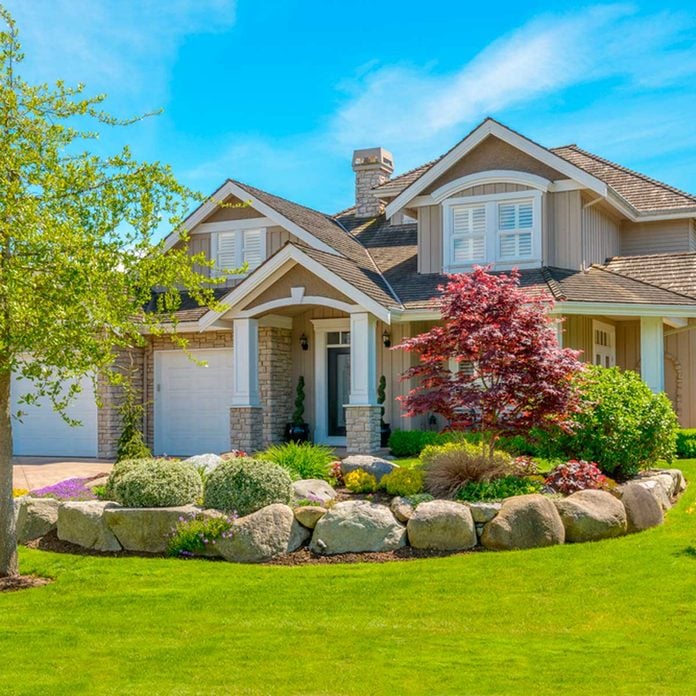
Grounding a Multi-Story Peaked Roof House
A multi-story house can stick out and look unnatural, particularly when it’s on a slope and looking all the more imposing as a result. A quick-fix is shown here, where an apron of rocks, shrubs and a small tree in front fills the middle ground between structure and lawn. Check out these tips for moving heavy objects, such as boulders and extra-large planted pots.
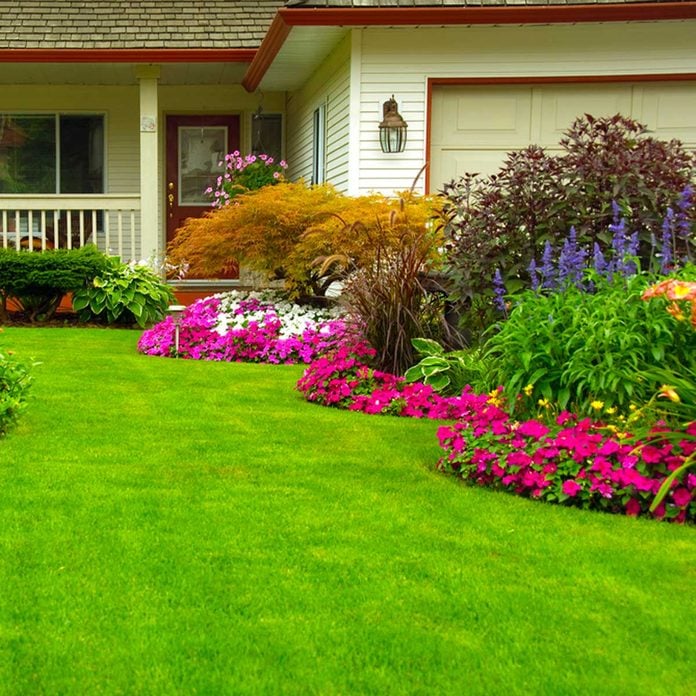
Compensating for a Conspicuous Garage
A lot of newer construction comes with conspicuous garage space—three, sometimes four bays’ worth—that may detract from the house. One option is to plant a landscape to recast that attention. It starts with large, flowing beds that can be seen from a distance, especially when filled with shapely plants with plenty of color. The eyes go to the landscape, then the house. As a result, the garage is minimized. Meet 49 colorful plants to brighten your landscape.
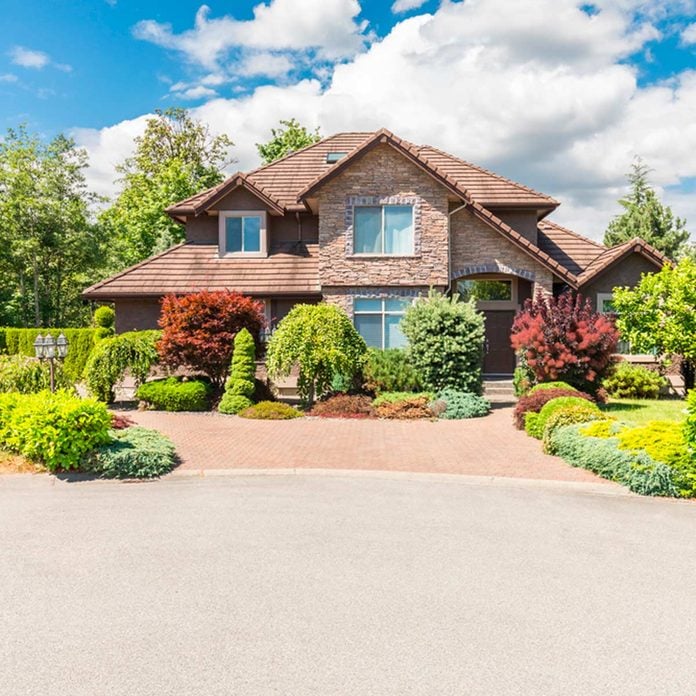
Highlighting a 2-Story House
The detached garage doesn’t come into play here. Instead, the focus is on the house and its nice mix of natural materials, which even spill over into the brick driveway. This is where landscaping can create a stage for the star. This stage includes plants with graduating heights, from low groundcovers to 8-foot shrubs. Burgundy and chartreuse plant colors are repeated for continuity. Discover how to build a brick pathway in one weekend.
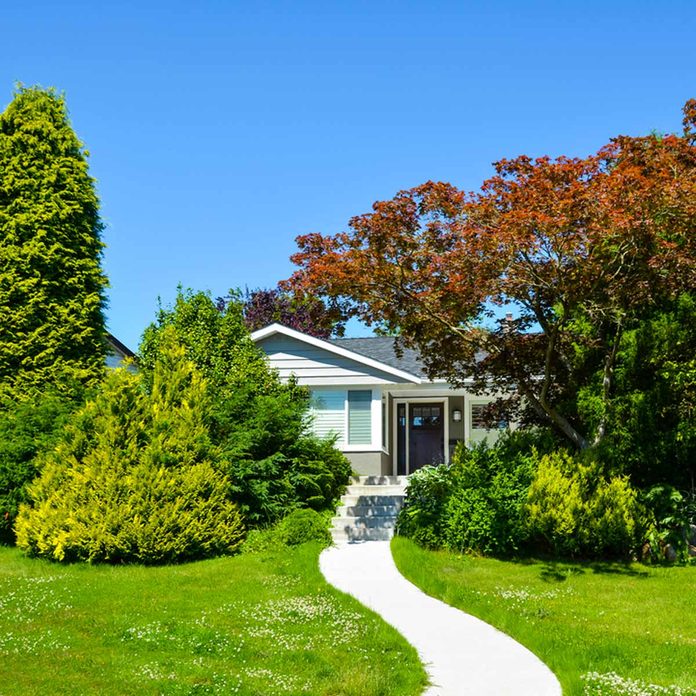
The Big Coverup
Here’s a landscaping tip for those who: a) like privacy; or b) aren’t anxious to show off their house. Partially obscure the structure. The key is to keep the entryway open so there’s still an obvious destination. Using plants with a variety of shapes and sizes—as well as contrast in color—makes it obvious this is planned, not overgrown. Here are 10 fast-growing trees to fill out your landscape.
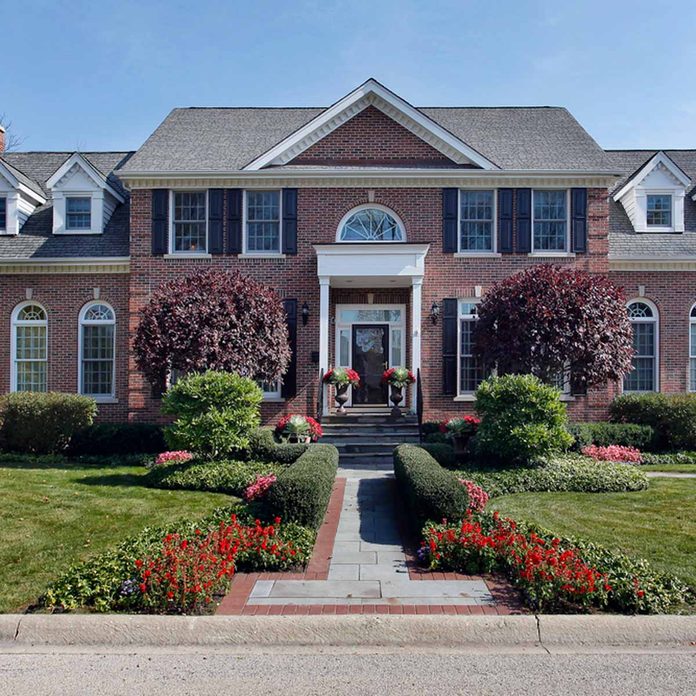
Amplifying the Magnificence of Classic Brick
Although landscaping can make a statement, in this case, the house speaks for itself. The surrounding landscape is more of a supporting player. The symmetrical layout—each side mirroring the other—is a perfect match for the formal-styled house. Matching burgundy tree-form shrubs mark the entryway, while urns filled with colorful flowers direct the eye to the door.
The owners of this grand home, plus anyone else with a brick home or wall, should check out this tutorial on how to replace a loose brick.
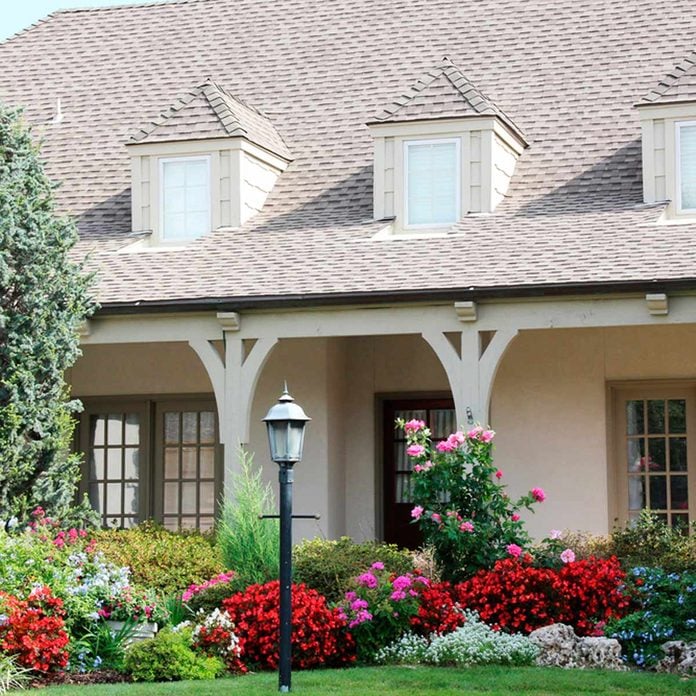
Mitigating a High Roofline
This house has a prominent roof and an abundance of beige going on, but landscaping has turned it into a showpiece. Notice how the upright evergreen tree breaks the plane of the roofline to make it less obtrusive visually. Meanwhile, brightly colored shrubs and flowers create a pretty spectacle that compensates for the muted colors of the house itself. These 12 tips help you track down and fix the most common types of roof leaks.
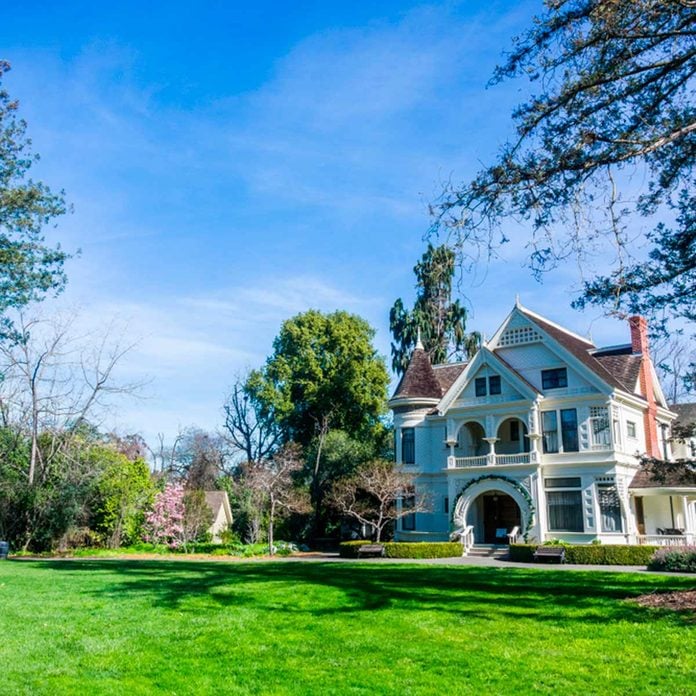
Stand Back and Let the Victorian Shine
A Victorian-style house can flaunt its beauty without much help from landscaping. That’s why less is more. The landscape tip here is to frame the house with larger trees, then skirt the foundation with a neatly sheared hedge that acts more as a color bar of emphasis rather than a competing element. A few shrubs with brightly colored flowers offer a nice seasonal contrast to the evergreens.
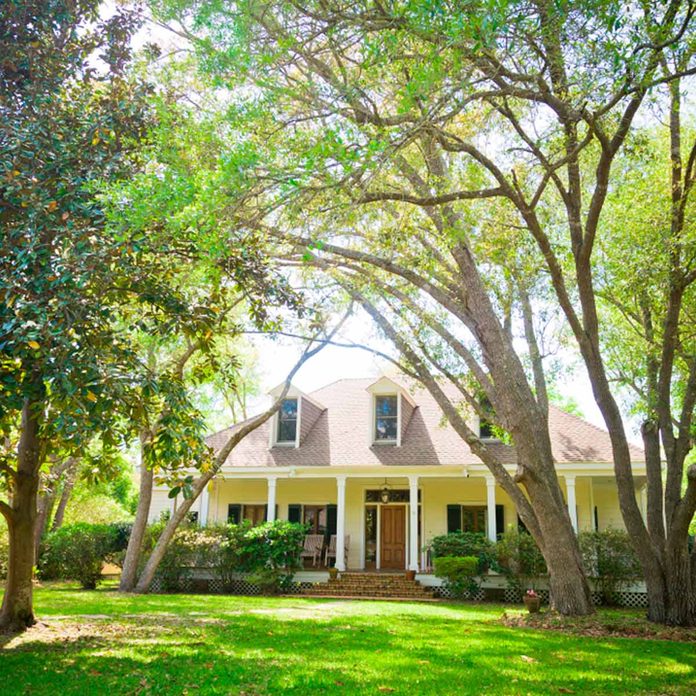
Framing a 1-1/2 Story House
With shrubs to frame the porch, this 1-1/2 story house is inviting yet private. The shrubs obscure most—but not all—of the porch. A partial view of the porch rockers keeps the tone friendly. Meanwhile, large trees with wide, sweeping branching frame the house, break up the lines of the prominent roof, and add an artistic touch worthy of a painting.
A gabled roof looks great from the outside and adds space and light inside. Here’s how to frame a gabled dormer.
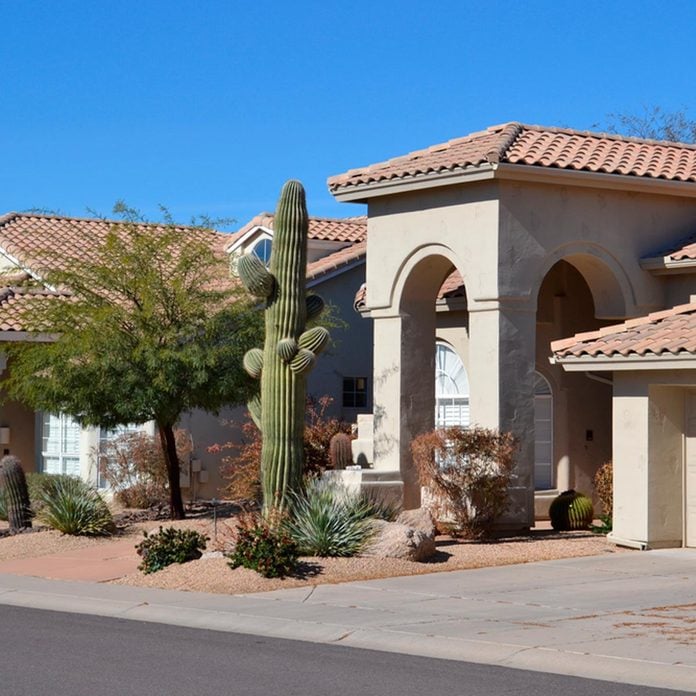
Signing a Non-Compete Clause in the Desert
This western ranch-style home is an architectural powerhouse that needs plants that are complementary, not competitive. The architectural cactus is large enough to be a focal point, drawing attention to the entryway. A small tree and large multi-stem shrub obscure some of the angles of the house, helping it to blend in better. Repeating smaller shrubs and mulching with a uniform color of stone ties the landscape together. Low-maintenance landscaping isn’t only found in the desert. Here are some other examples.
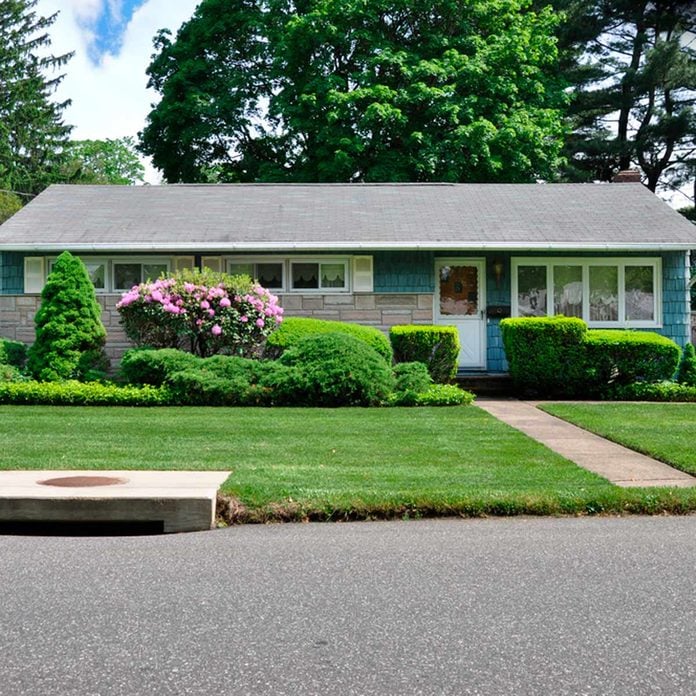
Reviving a Ranch
A landscaping tip for a dated ranch-style house: use plants to freshen things up. Sheared hedges by themselves would be boring. But add some mounded and pyramidal shapes and you’ve started a revival. These evergreens will look good all year long. Seasonal color from a rhododendron is a welcome change. Potted annuals and bedding plants would also be an option. See how one family opened up the cramped space in the kitchen of their 1950s ranch house.
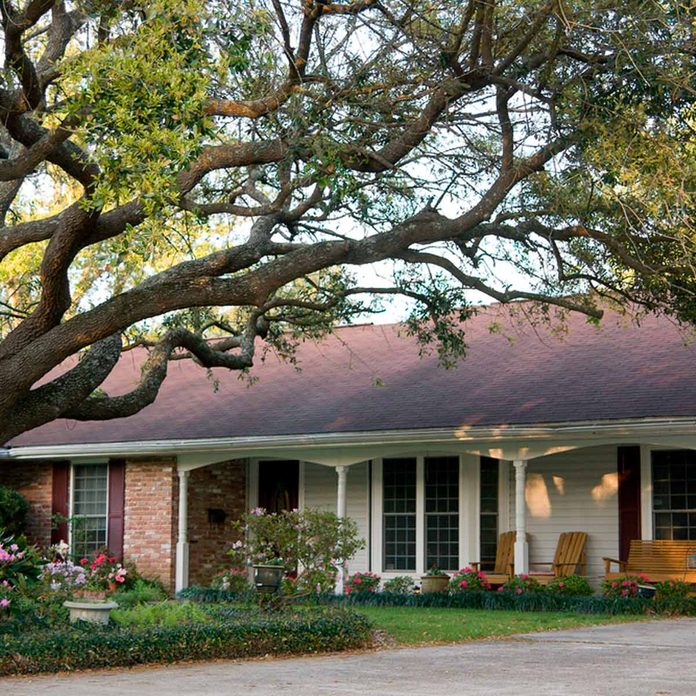
Breaking a Rule
It’s usually a good idea to match the size of landscape trees with that of the house. For example, ranch homes should have small to midsize trees, while large trees are reserved for 2-story houses. But, it’s hard to argue with the way this multi-stem oak improves the looks of the house. Its flowing shape is a contrast to the rectangular lines of the house and the branches in the foreground minimize the impact of the large expanse of roof.
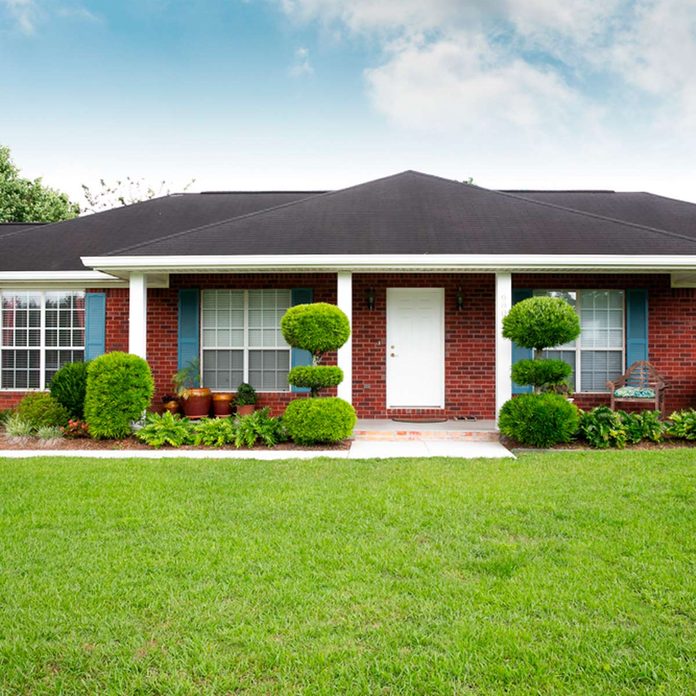
Going with the Flow
So the house is rectangular. So what? Might as well add some more geometric shapes and make it look intentional. Topiary (highly stylized pruning of shrubs) is a natural when it comes to calling attention to an entryway. While this landscape has formal elements, it is not totally symmetrical. A small deviation like that can generate more interest. Properly pruned plants look better and live longer, but don’t be over-zealous. Here’s how to avoid ruining your shrubs by over-pruning.
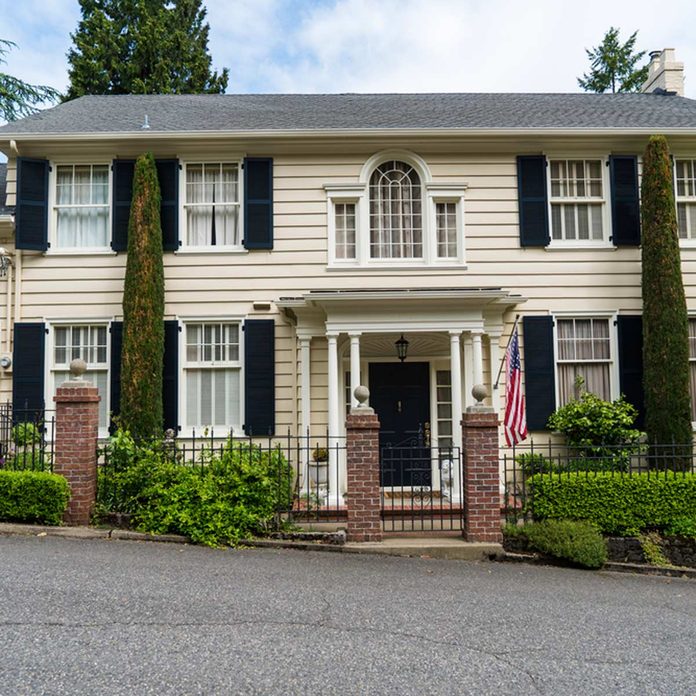
Pillar of Strength
Brick fence pillars, white entryway pillars, and columnar evergreen “pillars” work together to paint a formidable picture of this 2-story house. It would be overkill with a 1-story ranch, and unnecessary with a home further back from the road. But with front yard at a premium, it’s a way to make the house feel more protected and regal at the same time. If your yard is small, these 10 small patio ideas may come in handy!
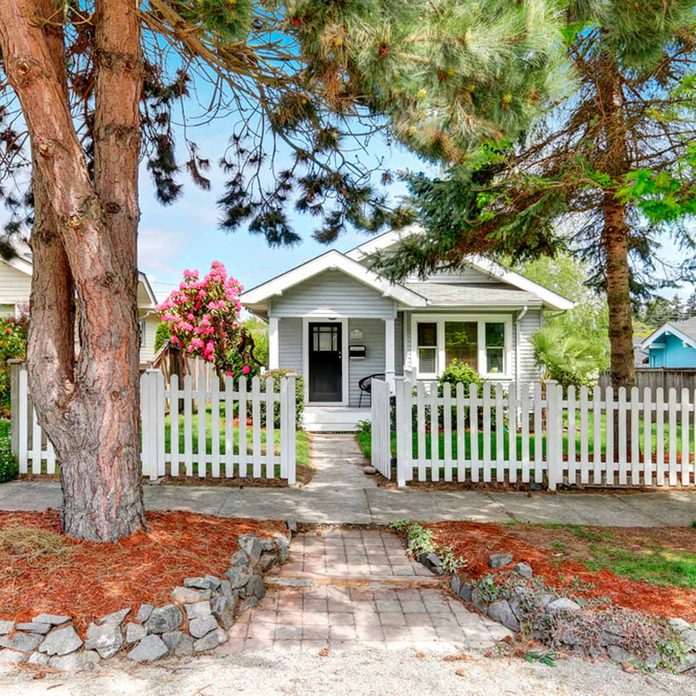
The Cottage Effect
Got a cute little cottage? Might as well emphasize that cuteness with the usual accessories: stone path, white picket fence, and bold shrubs. Being framed by a couple of handsome evergreens in the foreground doesn’t hurt either. We love this DIY cottage shelf, made with branches.
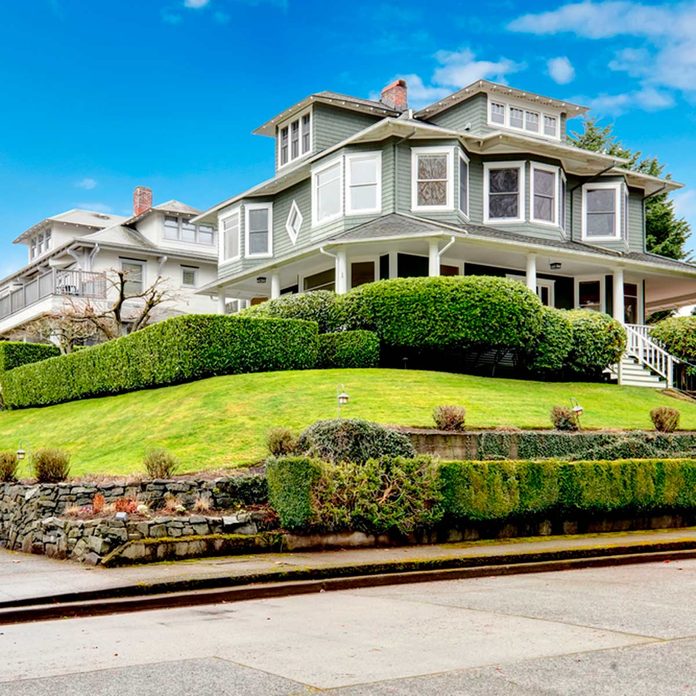
Some Garnish on the Side
A beautiful house on a hill needs little more than some plants to frame the setting. Larger trees are reserved for the side yard so they don’t block the house. Well-trimmed shrubs are garnish for the house, but also provide privacy for the porch. A tiered landscape in front adds another layer to the “frame” but also serves a practical purpose: it tames a slope that would be impossible to mow. Even if your lawn isn’t this big, you’ll want to check out these 12 tricked-out lawnmowers.